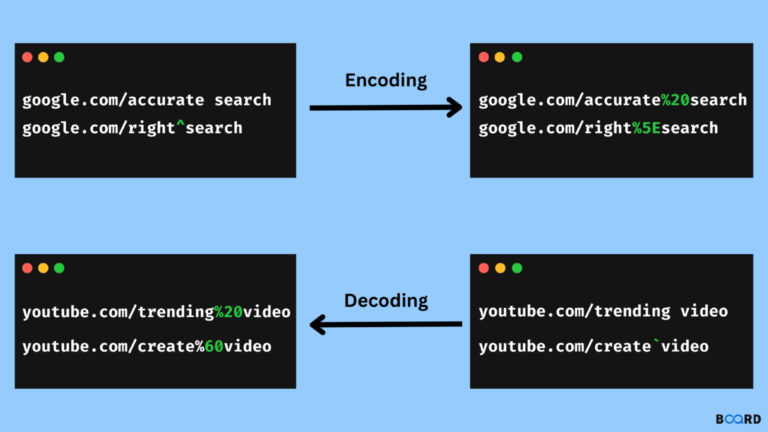If you want to know about encoding and decoding, then there is no need to worry. In this article, we have compiled comprehensive research on URL decoding Versus URL encoding. Encoding and decoding are methods used to encode and decode URLs, so it’s necessary to know the difference between URL encoding and URL decoding when working with data on the internet.
What is URL Decoding, and Why is it Important?
URL decoding is the reverse process of URL encoding. It turns an encoded URL into a standard or readable format. To convert it into standard or normal representation, it changes a set of percent (%) and hexadecimal values (which are changed during the encoding procedure).
Web addresses contain encoded characters that need to be decoded. URL decoding can enhance the readability of the URL in a precise way. Indeed it could also be helpful in analyzing the errors in the URL. Therefore it is necessary to decode the URL. Several online tools are available to decode the encoded URL. One of them is https://url-decode.com/.
What is URL Encoding, and Why is it Important?
The process of altering a URL into a format that is recognized by web browsers is known as URL encoding. URL encoding transforms characters into a format suitable for transmission over the Internet. We can replace the characters through URL encoding. Therefore, everyone needs to know how to encode the links for security and compatibility reasons. URLs are much more easily understood when they’re encoded as text rather than encoded as code. Encoding also prevents hackers from creating links that cause the browser to download malicious code.
URL encoding is necessary to determine the issues in your URLs. If you can identify when encoding has occurred, you can go into your structure and seek ways to resolve the issue, such as by creating a new URL. Only a limited number of the 128-character ASCII character set can be used in URLs. However, before entering these characters into a URL, you have to encode the characters. If the characters are not properly encoded, it can cause unexpected results. Therefore it is necessary to encode the reserve characteristics which are not part of this set.
Decodings are also useful for converting special characters into easy-to-read formats. You can also use numbers, letters, and punctuation marks to encode letters or words in your URL strings.
Difference between URL Encoding and URL Decoding
| URL Encoding | URL Decoding |
| URL encoding is the process of converting a URL into a format that web browsers can understand. URL encoding converts characters into a format appropriate for Internet transmission.The process of encoding a URL is called URL encoding.Only a limited set of 128 characters-ASCII can be used in URLs.It contains special characters, spaces, percentages, signs, plus, etc. | URL decoding is the reverse process of URL encoding. The process of converting an encoded URL string into a standard or readable format is known as URL decoding.The process of decoding a URL is called URL decoding.It modifies a set of percent (%) and hexadecimal numbers to convert it to standard or normal form.It transforms values back to their original encoding. |
How Can We Encode/Decode URLs?
Just find an operational URL decoder and encoder, and then follow these steps.
Enter the URL
URL (Uniform Resource Locator), also known as a web link, which is a unique identifier used on the Internet to locate a resource. Enter the URL in the tool or select the browse option to fetch the URL you want to encode and decode.
Click URL Encode/Decode Button
Click the URL Decode button if you like to decode the encoded URL.
Get Results
The results will be displayed after clicking on the “URL encode/decode” button. Long URLs with many words can be tough to read. This affects search engine rankings and user experience. By using a URL encoder/decoder tool, you can make URLs easy for users to read. Many decoding tools make decoding easier. But if you want to obtain better results, select the tool according to your needs.
Conclusion
A URL is an Internet protocol address used to identify the location of a web page on a network. Encoding and decoding are methods for making a text string visible. These methods are most typically used to encode and decode URLs. The process of converting an encoded URL string into a standard or readable format is known as URL decoding. It modifies a set of percent (%) and hexadecimal numbers to convert it to standard or normal form. URL encoding is the process of converting a URL into a format that web browsers can understand. URL encoding converts characters into a format appropriate for Internet transmission. As a result, everyone must understand how to encrypt their links for security concerns. We hope this article is very helpful in finding out about “Encoding URLs Versus Decoding URLs.”
Also, Know About –

